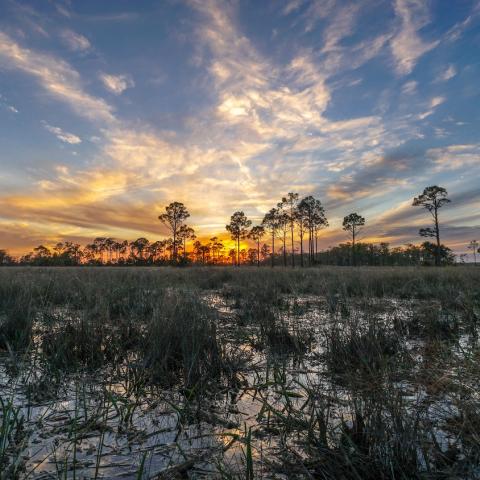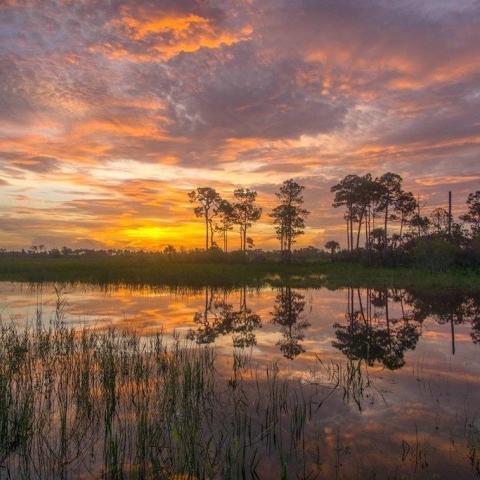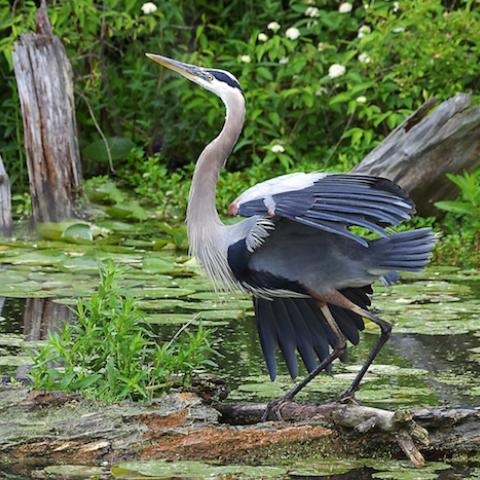In a move interpreted by the National Parks Conservation Association as "a direct attack on national parks," President Trump has directed the Interior Department to review, and possibly rescind, regulations pertaining to oil and gas drilling in units of the National Park System.
“It’s inconceivable to us that President Trump would take aim at these balanced rules for oil and gas drilling in national parks. These commonsense rules do not prohibit development but simply ensure that national parks continue to receive the highest possible level of protection," Nick Lund, NPCA's senior manager for landscape conservation, said Tuesday evening.
Last month a Republican congressman from Arizona introduced legislation aimed at eliminating the rules.
The regulations, known as “9B” rules, require detailed planning and set safety standards for oil and gas drilling inside national parks that have “split estate” ownership, where the federal government owns the surface but not the subsurface mineral rights. There are more than 40 national parks where the federal government does not own the mineral rights below the surface, including Cuyahoga Valley National Park in Ohio, Theodore Roosevelt National Park in North Dakota, and Mesa Verde National Park in Colorado.
The 9B rules, which the Park Service spent a decade revising, are updates to rules established in 1978 setting reasonable safeguards for national parks from private oil and gas development. The rules simply require an operator to produce a Plan of Operations before accessing their mineral rights, give the National Park Service the authority to conduct safety enforcement, and provide standard technical requirements for the safeguarding of national park air, water, and wildlife.
If the rules are repealed, drilling could occur in national parks with little more than bare-minimum state regulations, according to NPCA. The Park Service will have essentially no authority over oil and gas development proposed inside national parks. Leaks and spills could go unpunished without Park Service authority to enforce safety standards. Companies would be able to build roads through national parks to begin drilling, such as the 11-mile road through the heart of Big Cypress National Preserve in Florida built to reach an oil and gas lease. Drilling companies would not be required to inform parks or park visitors about when or how drilling operations would occur.
President Trump’s ordered review and possible repeal of these guidelines presents a clear threat to the National Park Service’s mandate to leave parks “unimpaired for the enjoyment of future generations," said NPCA.
"We hope Interior Secretary Ryan Zinke, who is now tasked with reviewing the 9B rules, recognizes how important they are to the health of our national parks and their visitors and leaves these important measures in place," said Mr. Lund.
According to NPCA,there are currently 534 active oil and gas wells across 12 units of the National Park System. There are 30 additional national parks with some “split estate” lands, but no active drilling at this point. A full list of all national park units affected by 9B rules can be found here.




 Support Essential Coverage of Essential Places
Support Essential Coverage of Essential Places







Comments
"...inconconceivable..."? No, I think it's totally conceivable that this would happen under the current administration. What I find laughable is that - with all of the other places in which oil & gas companies could drill (most with happy landowners more than willing to let the company onto their land in order to make a buck in lease rentals or royalties) - a company or corporation would want the negative publicity ensuing from trampling into someplace like Padre Island National Seashore (I'm headed there next week, as a matter of fact), or Mesa Verde National Park (been there), building a dirt or gravel road to get to a well pad, and incurring environmental / archeological damage, by accident or design within a national park, And, it would all go unpunished. This is why I go to these places now, while I can afford to. They may not look the same by the time my great-nieces and great-nephew grow up.
Why not name the congressman who introduced the legislation? It's a House Joint Resolution (H.J.Res.46) expressing disapproval of the rules, which were adopted last November.)
It was introduced by Rep. Paul Gosar [R-AZ-4], and is cosponsored by 6 fellow Republicans: Rep. Andy Biggs [R-AZ-5], Rep. Diane Black [R-TN-6], Rep. Aumua Amata Coleman Radewagen [R-AS-At Large], Rep. Dan Newhouse [R-WA-4], Rep. Louie Gohmert [R-TX-1] and Rep. Kevin Cramer [R-ND-At Large],
And this is just the beginning of the battle. You can be sure there will be a lot more to come. The Rethuglicans see a chance to grab some dollars and power and they're going to go for all they can plunder and all they can pillage while they can before Americans wake up and smell the sludge.